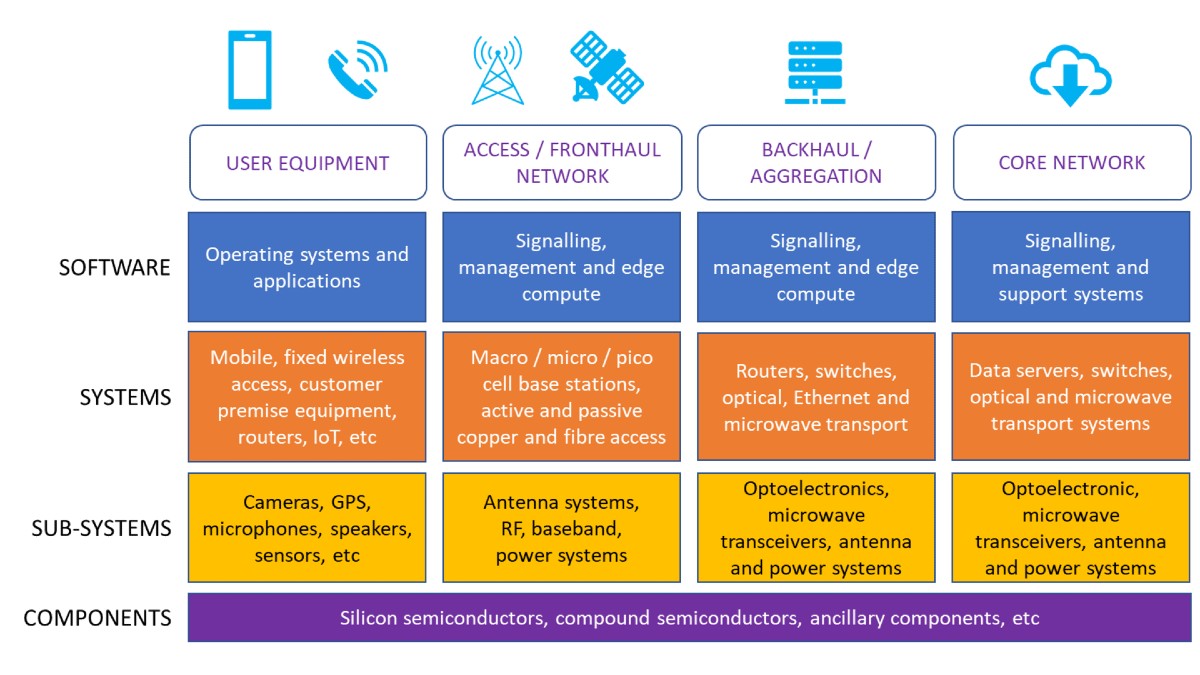Transforming the telecoms network
Consolidation in the telecoms industry over the last 20 years has led to a reduction in the number of vendors deploying telecoms infrastructure, which is now led by the ‘big three’ of Ericsson, Huawei and Nokia. An over-dependence on few vendors has raised concerns of resilience relating to network security and access to key technologies and materials.
The recently announced Telecom Security Bill aims to improve the security of UK telecom infrastructure by removing ‘high risk’ vendors, while improving the resilience of supply chains by diversifying the vendor base. The bill is accompanied by a telecom diversification strategy, which has 3 aims:
- Supporting incumbent suppliers to ensure their resilience and ability to supply the market in the near term, while supporting their transition into the emerging market structure;
- Attracting new suppliers into the UK market to build resilience and competition, prioritising deployments that are in line with our longer term vision;
- Accelerating open-interface solutions and deployment so that we are not reliant on any single vendor and begin to realise our long-term vision for a more open and innovative market.
The telecom diversification strategy creates opportunities for companies developing innovative telecom technologies, and its impact is best realised by considering the telecom network diagram below.

This diagram shows how data propagates from left to right through the network. Data is sent from ‘user equipment’, such as mobile phones, fixed telephony and a plethora of IoT devices, on the left. This data enters the ‘access / fronthaul network’, where it is passed on to ‘backhaul’, and then aggregated before reaching the ‘core network’ on the right. The core is responsible for routing data, perhaps to another mobile phone.
From top to bottom, this diagram represents technologies deployed across the network. The top (blue) layer represents software including operating systems and applications (apps). This software runs on systems (orange layer), which are in turn made up of sub-systems (yellow layer) and components (the bottom layer). Typical components include silicon semiconductors (otherwise known as ‘chips’), compound semiconductors and a variety of ancillary components.
Telecom diversification involves opening up the network by encouraging interoperability between constituent parts. Accelerating this process can be achieved through open standards, such as OpenRAN (radio access network), and reference designs such as those proposed by the Telecom Infra Project.
Surprisingly, the UK has many companies developing telecom technologies. The UK is home to a large number of digital chip designers, typified by ARM and Imagination Technologies, although their silicon chips are actually manufactured overseas. We have companies that design and manufacture compound semiconductor chips, including the world’s largest cluster in South Wales, companies that design and manufacture optical and microwave backhaul, antenna systems and small cell base stations along with a vibrant industry of software developers. Taken together, these companies develop systems that make up a sizeable proportion of the network.
As we look to the future, next generation telecoms will require increasing levels of cyber security, new encryption techniques involving quantum components and low earth orbit satellites to provide coverage for rural communities. Many of these technologies are being developed by UK companies today.
While the Telecom Security Bill, and telecom diversification strategy, apply to UK infrastructure, telecoms is a global industry that requires international partnerships to achieve economies of scale. Telecom diversification will create opportunities for many companies, both UK and international, addressing a growing global market. For assistance in navigating these opportunities, please contact the Compound Semiconductor Applications Catapult.
Guest blog by Dr Andy G Sellars, Strategic Development Director, CSA Catapult - follow them on Twitter and LinkedIn. You can follow Andy on Twitter and connect with him on LinkedIn.
To read more from #DiversifyingTelecoms Campaign Week check out our landing page here.

